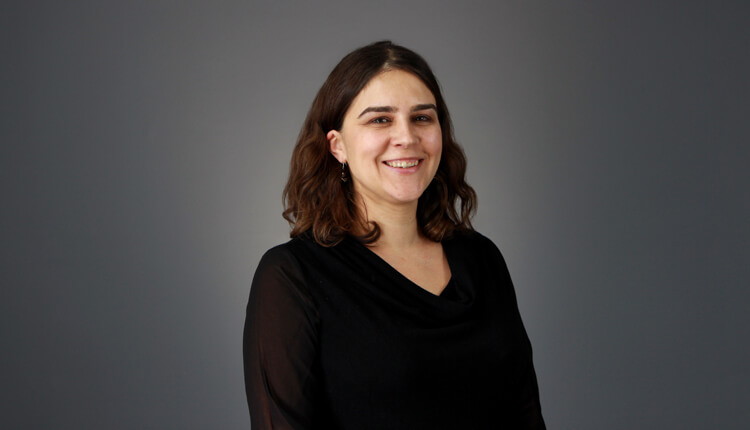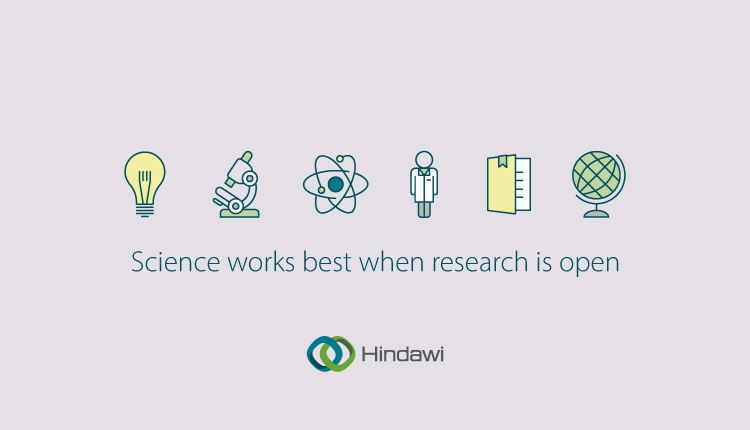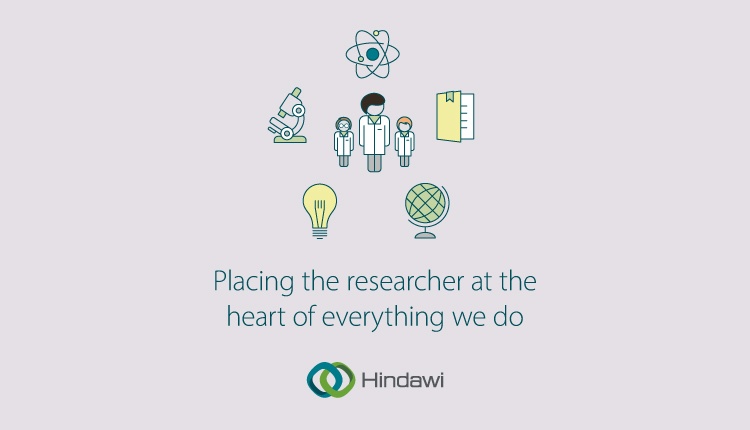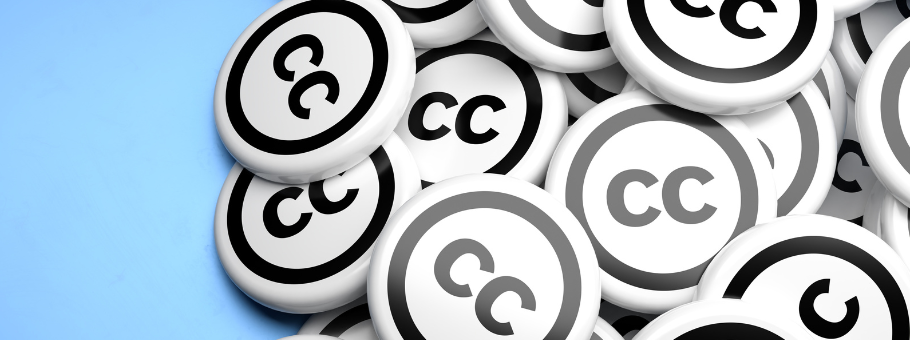Driving Open Science in the Modern Age: An Interview

The COVID-19 pandemic has raised many questions in the academic community, especially when it comes to sharing and disseminating research knowledge globally. This crisis has made researchers, editors, funders, and publishers realize even more the importance of open science. A number of collaborative initiatives across publishers and organizations within the scholarly publishing industry are now helping to further drive open access forward during this challenging period.
In this interview, we talk to Sarah Greaves, Former Publisher – Nature & Hindawi, about one such initiative and the way it is shaping the potential future of scholarly publishing. Sarah has over 20 years of experience within STM editorial and publishing. She was originally an academic researcher, completing her PhD at the MRC-Laboratory of Molecular Biology, before joining the editorial team at Nature Cell Biology in 1999. After four years of working within editorial, she moved into the Nature publishing team and was the Publisher for Nature for many years. During her time at Nature Publishing Group (now Springer Nature) Sarah also launched the first Nature-branded title with an open access option, Nature Communications, and subsequently launched Scientific Reports, the largest open access megajournal.
Throughout her career, Sarah has focused on creating innovative new products and services aimed at solving key researcher pain points. Previously, working as the Chief Publishing Officer of Hindawi, she was committed to putting the researcher at the heart of Hindawi and working with them to push for the open science agenda for their communities; developing relationships pre- and post-publication with data repositories and preprint servers, whilst introducing new editorial models across many Hindawi titles.
Sarah is also involved in numerous STEM outreach initiatives and is currently a volunteer with both InToUniversity and STEM Ambassadors.
Could you give our readers a brief introduction to Hindawi and some of its initiatives? Tell us about some of the recent achievements and major milestones for Hindawi?
Hindawi was established in 1997. Over the next 10 years, we progressively moved towards becoming a fully open access publisher and at the end of January 2007, we sold our last two subscription journals that weren’t suitable for an open access transition at the time, the International Mathematics Research Notices (IMRN) series, to Oxford University Press. Since then, every article in a Hindawi journal has been published under an open access license and is freely available to readers upon publication, with all our authors retaining full copyright for their published articles.
As one of the world’s largest open access publishers, we provide authors with an expansive portfolio of community-specific journals through which they can deliver their research to the broadest and most relevant audience possible. Submissions are handled by expert academic editors from within the community that each journal serves, with our journals’ Chief Editors further helping to shape and inform their titles in the era of open science. Authors benefit from easy and format-free submission, no cost language editing at point of submission, rigorous peer review, and timely editorial decisions.
We believe in open scholarly communication and strive to enable the widest possible access to research.
Here is a list of some of our initiatives:
- Leading the COVID-19 Rapid Review initiative, a cross-publisher collaboration aiming to ensure research related to COVID-19 is reviewed and published as quickly as possible while maintaining high publication standards.
- We built an open source submission and editorial system called Phenom.
- We launched a Publishing Partnerships program to help other publishers transition onto an open access publishing model.
- We launched a group of new author service partnerships, allowing Hindawi authors to take advantage of a wide range of tools and services at a discounted price.
- We are the first publisher to trial an AI-based academic language platform.
- We created a website dedicated to our Editor Community, which serves as a hub of information for Editors and an engagement platform.
- We are keen on science communication activities; we are developing a science communication guide for researchers that is free to access and use, regularly posting science communication content online, and helping researchers with post-publication visibility including lay summaries with SciencePOD.
- We have signed a joint commitment for action on diversity and inclusion in publishing and we are active members of the relevant working group.
- We took part in the Plans S Price Transparency Steering Group.
- I recently joined the OASPA Board of Directors, and Matt Hodgkinson, Head of Research Integrity at Hindawi, recently joined the COPE Council.
What measures have been undertaken by Hindawi to ensure that research studies especially the ones on COVID-19 continue to be published on time?
Wellcome Trust was one of the first funders to create guidelines for COVID-19 work, which many publishers, including Hindawi, have signed up to, and implemented. These include free access to all published work and notifying the WHO of relevant papers at the point of submission. We insist that all COVID-19 submissions are simultaneously uploaded onto BioRxiv or MedRxiv, or any other relevant preprint server, to ensure access for the WHO, and others, immediately.
Some open access publishers have gone further, ourselves included, and have waived article processing fees for any accepted work on COVID-19 published after peer review alongside a dedicated collection site which showcases all previously published and new works on SARS-CoV-2.
In addition, some of us have taken an even bigger step into more active collaborations. We initially connected with our colleagues at PLOS and the Royal Society to ensure that submitted work goes quickly to the right journal, regardless of publisher, and that peer review is accelerated as much as possible. This, alongside, our fast track commitment to COVID-19 work has led to increased turnaround times and publication times for COVID-19 papers following peer review.
This collaboration led to a group of publishers and organizations across the industry coming together to launch the C19 Rapid Review Initiative by creating a cross-publisher website to host and link all content relevant to the current pandemic, developing a dedicated peer reviewer pool so we ensure we are not over burdening specific academics, and transferring peer-reviewed work between titles and publishers to speed up decision-making and ultimately the publication of relevant papers. This means that relevant, peer-reviewed work is published more quickly no matter the journal or publisher it was originally submitted to; during a global pandemic this is more important than who will ultimately publish the work.

How does the Rapid Review service benefit researchers/authors?
Authors benefit from faster turnaround times and portable reviews meaning that their research reaches the most appropriate journal and audience regardless of publisher. All the data indicates that researchers across STEM often submit papers to at least three journals, receiving peer reviewer reports and editor comments at all those titles before they are published. This small step, specifically around COVID-19 papers, should allow those reports to be reused at other journals if the paper is rejected at the original title – hopefully speeding up the review and publication process. Also, by enforcing preprint deposition, high quality papers are identified faster and pushed forward for review.
Peer reviewers also benefit from a more streamlined process. Moreover, peer reviewers have signed up to the C19 Rapid Review with their details ensuring that we reach out to researchers who are most qualified to review relevant papers, hence reducing the time to identify appropriate reviewers as well as the burden on others.
Editors also benefit from a dedicated pool of reviewers that enables them to connect reviewers to the relevant papers more efficiently.
So far, how has the response been to the Letter of Intent and the Rapid Review initiative?
We have had an overwhelming positive response to the C19 Rapid Review initiative with nearly 2000 reviewers signing up as rapid reviewers from more than 80 countries. In addition our initiative is now endorsed by SSRN, AfricArxiv and RoRI; plus new publishers have joined the collaboration with some or all of their titles and are committed to our original Letter of Intent. Our original group of 9 publishers and organizations is now 20 and includes Springer Nature titles (from the BMC imprint), CUP (two titles) and MIT press (one title). We are still keen for more social science publishers to join our initiative.
How do you think the new Rapid Review service will influence future peer review activities once the pandemic has died down?
There is an on-going discussion about making this type of collaboration the norm in scholarly publishing. There are other areas of research that need our undivided attention and we hope that this type of rapid review will be applied to those as well.
How has the COVID-19 pandemic affected your editorial operations?
We have aimed to react as quickly as we can to increase turnaround and publication times for peer reviewed content but without removing any steps in our peer review process. This means working very closely with our Chief Editors and editorial boards, and maximizing the use of the rapid reviewer databases. All papers on COVID-19 enter our fast-track editorial system (more details are below) and we have continually had to adapt as our volume of submissions in this area continues to increase.
What trends are you seeing in manuscript submissions during this global crisis?
At Hindawi, we are seeing increased submissions from academics around the world – as researchers are out of the lab and so have more time to write up work; but also seemingly responding to the increased attention on, and desire for, open access and open science. We are also seeing an increased volume of Review submissions, alongside the obvious increase in COVID-19 submissions. Initially our COVID-19 papers were around surveys and case studies but are now moving in social and epidemiological aspects, as well as analyzing potential treatments and the biology of the novel coronavirus.
As academics now start to move back to the lab we would expect to see submissions continue to increase as new research is carried out but, as with all publishers and those in the academic space, it will be interesting to see what happens over the winter and into 2021. It is quite likely any economic impact on STM research may not be felt until grants are renewed over the years to come.
How is Hindawi assisting researchers working on coronavirus studies in disseminating their results faster?
Hindawi has a dedicated website collecting all published work – creating a “one-stop shop” for researchers. This links with a wider cross-publisher collection hosted by the Copyright Clearance Center and is also featured in a wider collection hosted by Science Open. By promoting these sites we are ensuring the widest possible dissemination of our content and will press release papers that are of widespread interest to the general public.
The fast track editorial system includes a triage step so authors can get fast decisions before peer review, allowing them to submit elsewhere if necessary without waiting for peer reviewer reports. This has allowed our Editors to provide faster decision times on papers going into the peer review system and has ensured our peer reviewers are not overwhelmed. Helping to manage the flow of papers, ensuring those that need to be published quickly can be, aids the dissemination of work as the time to publish is up to many days shorter than our non-COVID19 papers at this time.

How do you foresee the future of academic publishing in a post-COVID world?
The ideas of Open Access and Open Science have been pushed to the forefront of all stakeholders’ minds through this global situation – including researchers, research councils, institutions, and publishers. These extraordinary times have stressed the importance of having research openly available as well as the need for transformative changes in scholarly communications. We envision more active collaborations to take place among publishers and organizations in conjunction with a more radical approach to open data and open peer review from the community at large.
Hindawi has recently started a collaboration with Enago as part of a new author services initiative. How does partnerships like this benefit authors looking to publish their research in Hindawi journals?
We feel that enabling authors to overcome some of the more disproportionate hurdles to publishing globally accessible research (including the need to publish in English-language) is an important part of our role as a publisher.
We already provide free, AI-driven language editing suggestions at the point of submission to all our authors and the wide-ranging author services partnerships we have (such as that with Enago) provide a varied set of tools and services that authors can use to both improve the quality of their paper prior to submission, as well as make it easier for a wider audience to understand and access. Manuscript preparation services, such as language editing and translation, can assist authors with writing and formatting their manuscripts to a high standard, potentially making the submission process less time-consuming. While post-publication tools for research promotion, such as video, infographics and graphical abstracts, can help increase the reach and impact of research once it has successfully traversed peer review and been published.
It would be great if you could share a final piece of advice or some concluding suggestions for our readers.
When submitting your work, find the most relevant journal for your subject area – you should be aiming to reach the best audience for your work and should keep in mind where they might be reading (on a scholarly communication network, social media, search engine, indexer, database or journal website). In addition, always ensure you provide the associated data so others can analyze your work and drive academic study forward. Open science is an opportunity for us all to rethink how science is done and it is our duty to ensure the science we put before the public is verified by our peers and put into context – now more than ever this remains vitally important.
You can check out Hindawi’s website and also follow them on Twitter @Hindawi.
It was a great pleasure to talk to Sarah Greaves. We sincerely thank her for taking the time to be a part of this interview and also wish her team all the very best in their future endeavors!
Note: Enago is pleased to provide author services for Hindawi authors. If you are thinking of submitting a paper to a Hindawi journal and would like to have your paper polished before submission, then click here to receive 10% discount on Enago’s editing prices.









